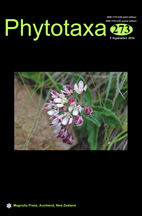Abstract
Hymenochaetaceae is one of the most important families of wood-inhabiting fungi. Most members of this family are polypores, while two genera, viz. Hymenochaete and Hymenochaetopsis, also accommodate species bearing hymenial surface with other configurations. In the current paper, two recently collected Thai specimens are described as the new species Hymenochaete conchata. This species is characterized by annual and pileate basidiocarps, a concentrically zonate and sulcate pileal surface, a smooth hymenial surface, a monomitic hyphal system with two kinds of simple septate generative hyphae, smooth and subulate hymenial setae, and oblong-ellipsoid basidiospores. Hymenochaete conchata mostly resembles H. ochromarginata, H. rubiginosa and H. villosa by its annual, pileate and imbricate basidiocarps, but differs in its smaller basidiospores. Moreover, in the current ITS-based phylogeny, H. conchata also occupied a separate position from these three species. From a phylogenetic perspective, H. conchata was placed in the Hymenochaete clade and had a more or less close relationship with H. tongbiguanensis. However, H. conchata could be easily distinguished from H. tongbiguanensis due to the resupinate basidiocarps and denticulate setae in the latter. Ecologically, H. conchata could have both parasitic and saprophytic habits.

